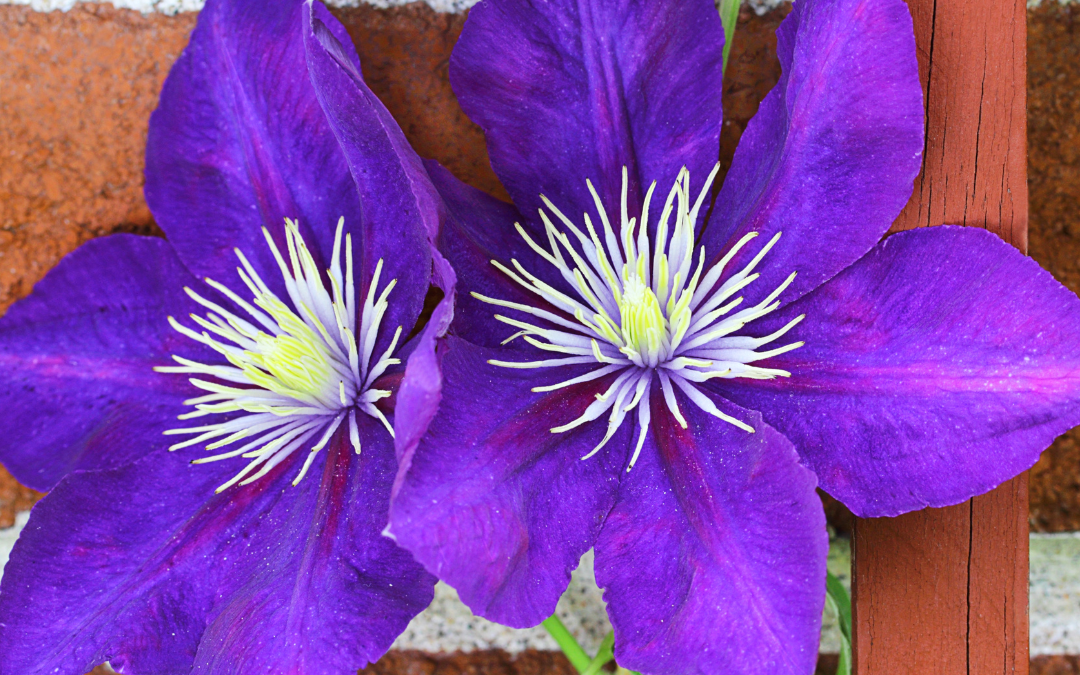Clematis is a genus of climbing plants that are widely grown in gardens for their beautiful, showy flowers. They can be trained to climb trellises, walls or arbours, adding vertical interest and texture to any garden. Whether you’re looking for white, pink, blue or purple flowers, clematis plants provide a stunning display that is sure to delight gardeners of all kinds.
How to Plant & Care for Your Clematis

Planting in the cool spring is the optimal time for successful growth. The soil is warm and moist, providing ideal conditions for root development. With careful attention to timing and soil conditions, planting in the spring gives plants a better chance of taking root and thriving.
Sun
Clematis does best when it gets ample amounts of sunlight throughout the day. Ideally, it should get 6 hours of full sun for optimal blooming.
Soil
To ensure a successful planting, the soil should be light with good draining. Additionally, it must have a balanced pH level. Before planting, mix in compost or aged manure together with bonemeal for extra nutrition.
Water
Regularly water the soil when the plant is in its initial year, to ensure that it stays moist. To help with moisture, add an extra layer of mulch around the plant.
Tip: Once planted, it’s best not to move or disturb your plant in any way.
Directions
1.) Dig a scoop in the ground as wide as two to three times the size of the root ball and make sure it is a few inches deeper than that.
2.) For optimum temperature & moisture control, ensure that the crown of the plant is situated around 4 inches underground. This ensures proper branching and stem growth beneath the soil surface.
3.) After that, mulch the region to maintain coolness around the roots and also limit weed growth.
4.) Place your favourite climbing structure! Whether you intend to place your Clematis against a wall while fixing it upwards or letting it grow along an arbour or trellis. Vertical blooms are the best part about growing vines!
Care Tips
- During the springtime, make sure to spread compost in a way that is away from the stems of the plant. This will ensure your plants get the nutrients they need.
- Get rid of old dead branches, cutting just above new buds to help foster the growth of newer ones.
- On older plants, remove any stems that are 4 years old or older.
Popular Varieties
 Clematis Jackmanii Superba Clematis Jackmanii Superba |
 Clematis Louise Rowe Clematis Louise Rowe |
 Clematis Multi Blue Clematis Multi Blue |
 Clematis Kilian Donachue Clematis Kilian Donachue |
 Clematis Alpina Pamela Jackman Clematis Alpina Pamela Jackman |
 Clematis The President Clematis The President |
Did you know? The name ‘clematis’ has its origin in the old Greek term ‘klematis’, which stands for a creeping or climbing plant.
Looking for more? Check out the latest episode of Get Up and Grow with our President Gord Nickel, as he teaches Hannah Lepine everything she needs to know to grow her own Clematis at home!


